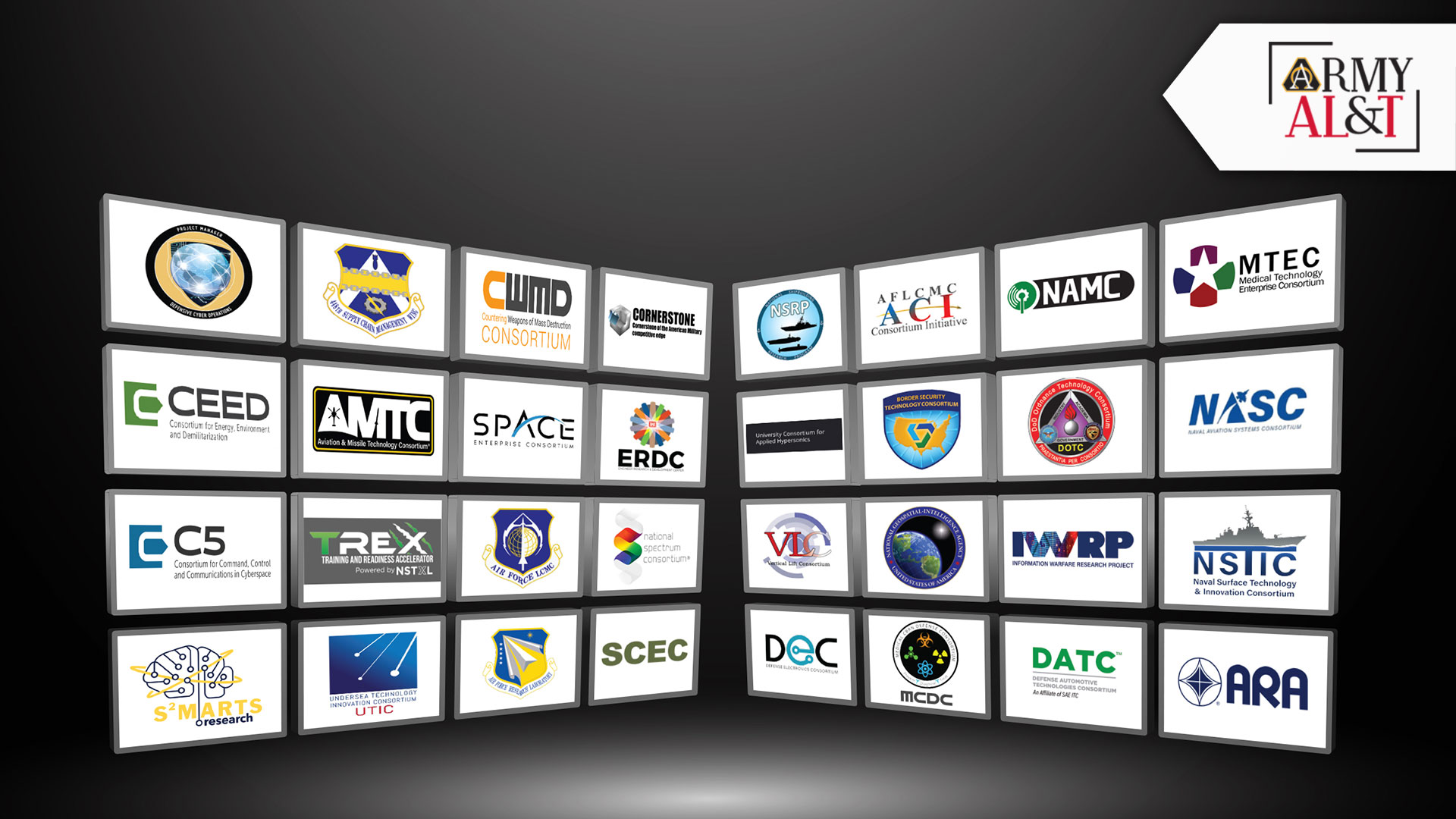
SPEED BY CONSORTIUM: Using consortia, the government can quickly access innovative nontraditional defense contractors. This would be significantly more difficult outside of the consortium other-transaction authority construct.
Consortia make prototyping work
By Steve Stark
The consortium model is one of the ways that the government has found to work more simply with innovative companies.
“Let me take you through the scenario,” Bob Tuohy, chief operating officer emeritus of consortium management company Advanced Technology International (ATI), said in a September 2021 interview with Army AL&T. The Navy “put out a solicitation saying that they wanted a company, a consortium management firm, to create a consortium for them using other-transaction authority so that they could get access to the latest and greatest innovators” to help do the work on the Navy’s information warfare research and development (R&D) project.
“ATI won the contract, the other-transaction agreement,” he said. “We went out and recruited hundreds and hundreds of companies to join this consortium, whose purpose is to respond to the Navy’s information warfare R&D requirements. When you say R&D requirements, you’re talking about, ‘Go out and build a prototype of a new capability.’ ”
ATI’s emphasis in recruiting was “what is called nontraditional defense contractors,” Touhy said. “There’s a definition in the law that basically says, if you’re a small business, a nonprofit, or you haven’t done business with the government that required the cost-accounting standards for over a year, you count as a nontraditional.”
PROBLEM DESCRIBED
When the government needs to develop a capability that’s within the consortium’s scope, it works with the consortium manager, ATI, and its constituents. ATI has a regular online forum for its participants, and member companies send representatives to discuss issues with the government and potential teammates to understand what the government is looking for. Tuohy said the government describes the problem sets that need to be solved, and can collaborate with consortium members.
“This is a very, very important part of it because this is something that is enabled by the fact that it’s an other transaction,” he said. Though not technically impossible with the Federal Acquisition Regulation (FAR), it’s very difficult. “You actually have these companies that know what the art of the possible is [who are] helping the government and the government’s telling them what problems need to be solved. And together they essentially write the solicitation.”
There are 31 consortia that work with DOD, one with the Department of Homeland Security and another for the National Geospatial-Intelligence Agency. Of those, ATI manages 12.
“The government hands us, essentially, a book of technology problem statements, and we manage the consortium’s response to those, and help the government start getting those problems solved.”
It costs money to make those connections and provide services to the consortia that it manages. In addition to regular meetings, ATI provides an infrastructure that consists of things like a members-only website and secure communications capability. All of ATI’s services are paid for with consortium dues.
WORK IN PROGRESS
There isn’t, according to Tuohy, a single standard for how a consortium is supposed to work. “In each case,” he said, “the contracting organization of the government sets out what it wants as its requirements, if you will, for how it operates. Now, because [of] the advantage of other-transaction authority, it’s an open book; the government can decide how much or how little it wants to direct the construct and the activities of the consortium.”
That said, he continued, what the government “tends to do is be very specific, although in a collaborative fashion, with how the competitive process is designed. They’re all a little different. For instance, one consortium may only ask for initial white papers of 10 pages, then the merit is understood.” Then the government will downselect and ask for cost proposals. All that is directed after collaboration with the government. “So the government sets a lot of standards for process, but not necessarily for the construct of the consortium. That sort of happens by these executive committees, with the understanding that it has to meet what the government’s desires are.”
TECH TEAM
What often happens with discussions among consortium companies are teaming arrangements, Tuohy said. ATI holds collaborative meetings and facilitates conversations among businesses with different capabilities so that they can leverage each other’s strengths. As a service to consortium members, ATI “will hold something akin to speed dating” to pair up companies. During these sessions, “big integrating contractors get to listen to the smaller, innovative contractors and decide who they can team up with to solve the problem.” That’s a benefit for the contractors and for the government.
When agreements are made, Tuohy said, another part of ATI’s work on behalf of its client businesses is to provide back-office functions. “Once the award is made, ATI does the accounting, they receive the payments from the government, [and] they pay the bills that are presented by the teams.” ATI has the skills and knowledge to handle government systems so that the “nontraditionals don’t have to worry about that. They just bill us the normal way they bill anybody, and we keep track of deliverables, milestones, we do reporting.”
That reporting is every bit as exhaustive and transparent as with any other kind of contracting. “There is every bit as much transparency in [other-transaction] contracts as there is in any other contract, it’s just that the government hasn’t quite figured out how to disseminate that information amongst themselves,” Tuohy said.
At the end of an other-transaction contract, Tuohy said, the government closes them out just like any other. ATI’s services to its consortia include making sure everything—paperwork, deliverables—gets where it’s supposed to be and making sure that, if there’s classified or sensitive work, it gets handled properly.
This sidebar was originally published with the article FAR NOT FAR







